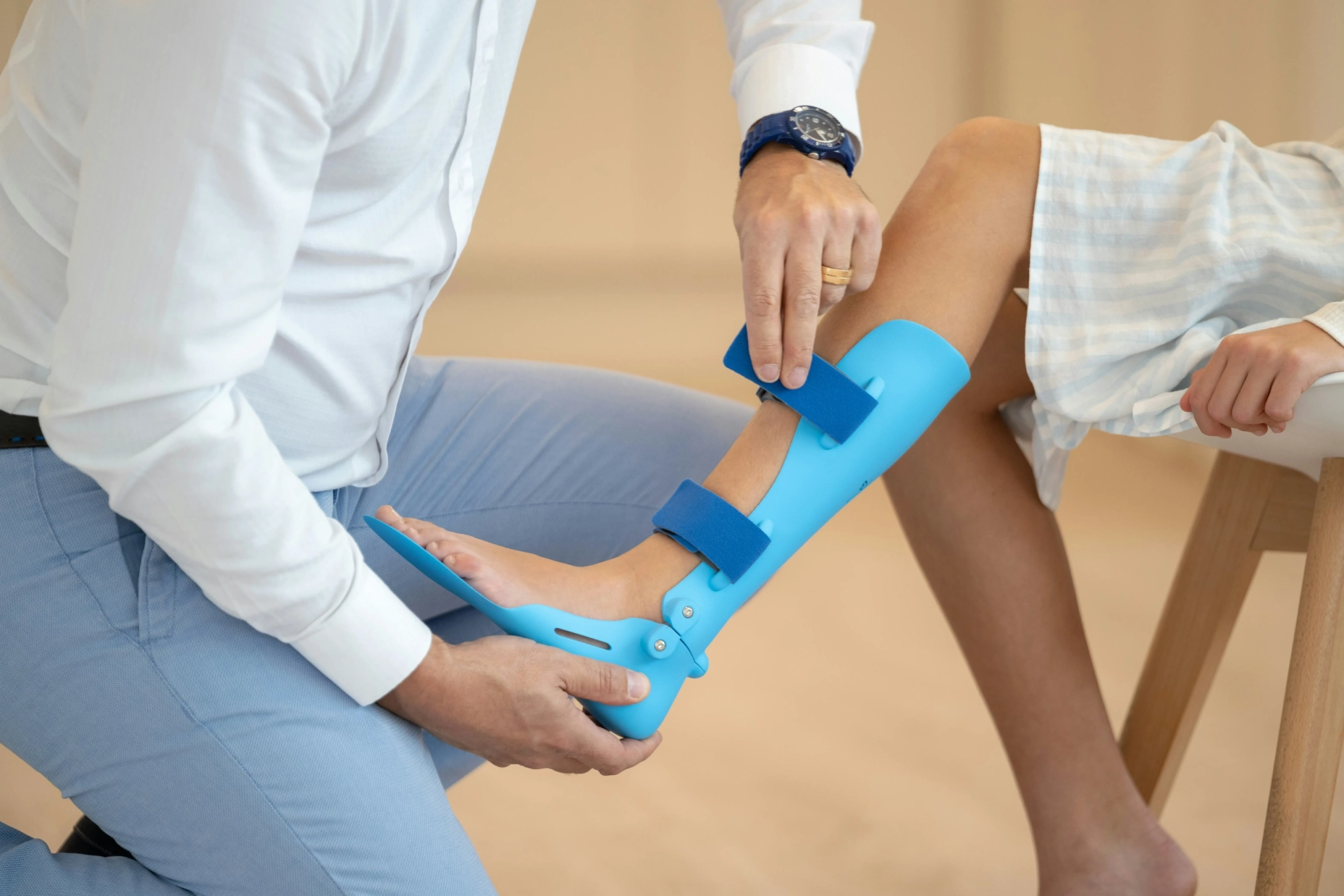An ankle fracture can impact mobility, daily activities, and overall well-being. Beyond proper medical treatment, factors such as rehabilitation exercises, nutrition, and gradual weight-bearing play a key role in healing. Knowing the best strategies to support recovery after an ankle fracture helps patients restore strength, prevent complications, and return to normal activity as safely and quickly as possible.
Healing an Ankle Fracture
Bone healing occurs in three main phases. The inflammatory phase begins immediately after the injury and lasts about one to two weeks. During this time, your body forms a blood clot around the break and sends healing cells to the area. Swelling and pain are normal during this stage.
The repair phase follows and often lasts six to twelve weeks. Your body creates new bone tissue to bridge the gap between broken pieces. This soft callus gradually becomes harder and stronger. The remodeling phase can continue for months as your bone reshapes itself and regains full strength.
Several factors influence the rate at which your ankle fracture heals. Age plays a significant role, as younger people often heal faster than older adults. Your overall health, nutrition status, and activity level also affect recovery time. Smoking and certain medications slow the healing process.
Key Steps To Support Healing
Rest forms the foundation of ankle fracture recovery. Following your doctor’s weight-bearing restrictions prevents further damage to the healing bone. Using crutches, a walking boot, or a cast as prescribed protects the fracture site from harmful stress.
Proper elevation reduces swelling and pain. Keep your injured ankle above heart level when sitting or lying down. Taking prescribed medications as directed supports the healing process. Pain relievers help you stay comfortable while anti-inflammatory drugs reduce swelling. Follow dosage instructions carefully and discuss any concerns with your healthcare provider.
Physical Therapy and Safe Exercises
Physical therapy plays a fundamental role in ankle fracture recovery. Your therapist designs a program tailored to your specific injury and stage of healing. Early exercises focus on maintaining circulation and preventing stiffness in surrounding joints.
Gentle movements help improve flexibility and reduce stiffness as healing progresses. Range-of-motion exercises keep your ankle joint mobile without putting too much stress on the fracture. These may include ankle circles, toe pointing, and gentle flexing movements.
Strengthening exercises begin once your doctor determines the bone has healed sufficiently. These activities rebuild muscle strength lost during the immobilization period. Balance training also becomes necessary to restore stability and prevent future injuries.
Lifestyle Habits
Proper nutrition supports bone healing and tissue repair. Include dairy products, leafy greens, and fortified foods in your diet. Protein helps build new tissue, so it’s key to eat lean meats, fish, beans, and nuts regularly.
Getting adequate sleep allows your body to focus energy on healing. Create a comfortable sleeping environment and maintain a consistent bedtime schedule to support recovery. Avoiding harmful substances accelerates healing and reduces the risk of complications. Smoking significantly slows bone healing and increases infection risk. Discuss any supplements or medications with your doctor before taking them.
Treat Your Ankle Fracture Today
Recovering from a fractured ankle requires patience and commitment to proper care. Following medical advice, staying active within prescribed limits, and maintaining healthy habits all contribute to faster healing. Each person’s recovery timeline varies based on the severity of their injury and individual factors. Contact a qualified podiatrist if you suspect you have a broken ankle for professional medical care.









Leave a Reply